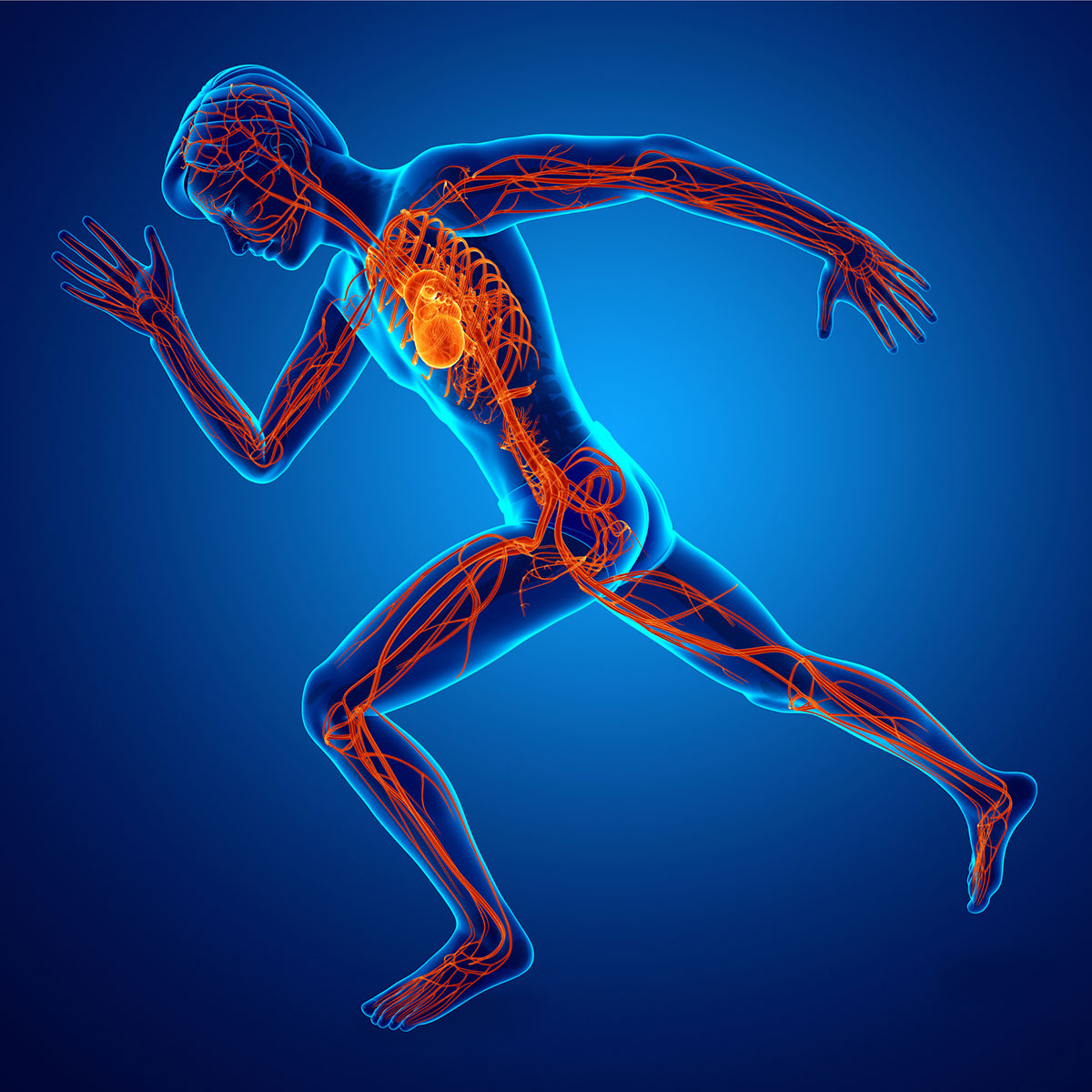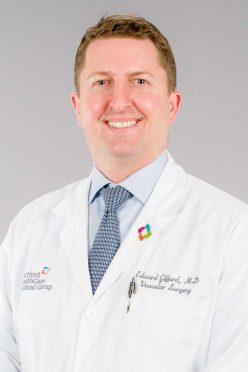<< Back
Why Put Vascular Disease on Your Radar? Ask This Vascular Surgeon

August 20, 2019
 Dr. Edward Gifford, MD
Dr. Edward Gifford, MD
Most people never have to worry about vascular disease. But everyone should know about it because vascular disease can affect up to 25 percent of people as they age.
What happens when we age?
A number of changes can take place within our arteries and veins. Some people develop blockages, which we call a stenosis. These blockages can prevent enough blood from getting to our tissues. We commonly see patients for blockages in their leg arteries, which can cause muscle-cramping when they walk.
Other times, blockages can increase our risk of plaque or a clot breaking off. This can lead to problems like a stroke after severe narrowing in the arteries that deliver blood to our brain, known as the carotid arteries.
When blood vessels age, they can also enlarge like a balloon. We call this an aneurysm. Aneurysms usually occur in your aorta, sometimes referred to as an abdominal aortic aneurysm, or AAA, or in your legs, most often referred to as a popliteal artery aneurysm. When aneurysms enlarge they are at risk for rupture (such as in a AAA). They can also form a clot that blocks the artery (as in a popliteal artery aneurysm). If you have an aneurysm you may be sent to a vascular surgeon to discuss treatment options.
Sometimes even healthy people can have vascular problems. You may have heard about Zach Miller, the professional football player for the Chicago Bears who suffered a complete blockage of his popliteal artery in 2017 due to a knee dislocation. All of these are examples of vascular disease.
The term “vascular” refers to our circulatory system’s arteries and veins that take blood to and from our heart and throughout our body. Arteries are the blood vessels that take blood away from our heart, to our vital organs like our brain and kidneys and to our arms and legs. The largest artery in our body is the aorta. Veins take blood from our organs and tissues back to our heart.
Many people think that a vascular surgeon only treats patients with an open surgery. In fact, nothing could be further than the truth! Vascular surgeons, now commonly referred to as vascular and endovascular surgeons, have been on the cutting edge of minimally invasive vascular therapy for more than 20 years.
When we discuss endovascular options, we are typically referring to treatment of both blockages and aneurysms without the need for open surgery. These treatments are performed using catheters and wires in your blood vessels, all through a single puncture in your artery or vein. Most important, vascular surgeons often manage the medical treatment of vascular conditions as well, in conjunction with your primary care doctor or specialist.
Vascular and endovascular surgeons also treat problems with veins. In the deep veins, clots that form can travel to our heart and lungs and cause a blockage known as a pulmonary embolus, or PE. When the clots are in the legs or arms they are known as deep vein thrombosis, or DVT. If you have had a pulmonary embolus or deep vein thrombosis, you may see a vascular surgeon to discuss medications for blood thinning to prevent another clot, filters to protect clots from traveling to the lungs or treatment options if veins remain blocked.
Varicose veins in your legs can develop when the valves that help blood travel back to your heart stop working properly. Almost 50 percent of people have some evidence of varicose veins. Enlarged veins in the legs can become painful. Vascular and Endovascular surgeons offer several medical and minimally invasive strategies to treat varicose veins.
Who Gets Vascular Disease?
Patients develop vascular disease for different reasons. Sometimes there are hereditary factors that increase plaque formation in the arteries known as atherosclerosis. Other patients have lifestyle factors that affect the development of vascular disease. Tobacco use is among the most common reasons patients develop blockages in their arteries. Other factors include high blood pressure, diabetes, high cholesterol and older age.
In fact, most patients we see for arterial disease are in their 60s or older, although in some cases younger patients can develop blocked or enlarged arteries. Vascular disease isn’t entirely related to aging. Vein disease can happen throughout our lifetime. We see young and old patients alike with conditions such as deep vein thrombosis, varicose veins and thoracic outlet syndrome.
How Do We Treat Vascular Disease?
Vascular and endovascular surgeons offer many options for treating vascular disease. We provide non-invasive as well as minimally invasive diagnostic testing, most of which can be done right in our office. If we are able to do so, we generally recommend medical therapy for vascular disease before moving on to endovascular or surgical treatment options. This includes tips on lifestyle modification, physical therapy to improve symptoms and medications that may improve your condition.
If a procedure is needed, we will discuss the available minimally invasive and open surgical procedures, and what might be the best fit for you.
Sometimes the most important thing we do for our patients is help them understand what their diagnosis means. Many vascular conditions are chronic, and oftentimes we develop a lifelong relationship with our patients.
Dr. Edward Gifford is a vascular and endovascular surgeon at the Hartford HealthCare Heart & Vascular Institute. For more information on vascular surgery, click here.